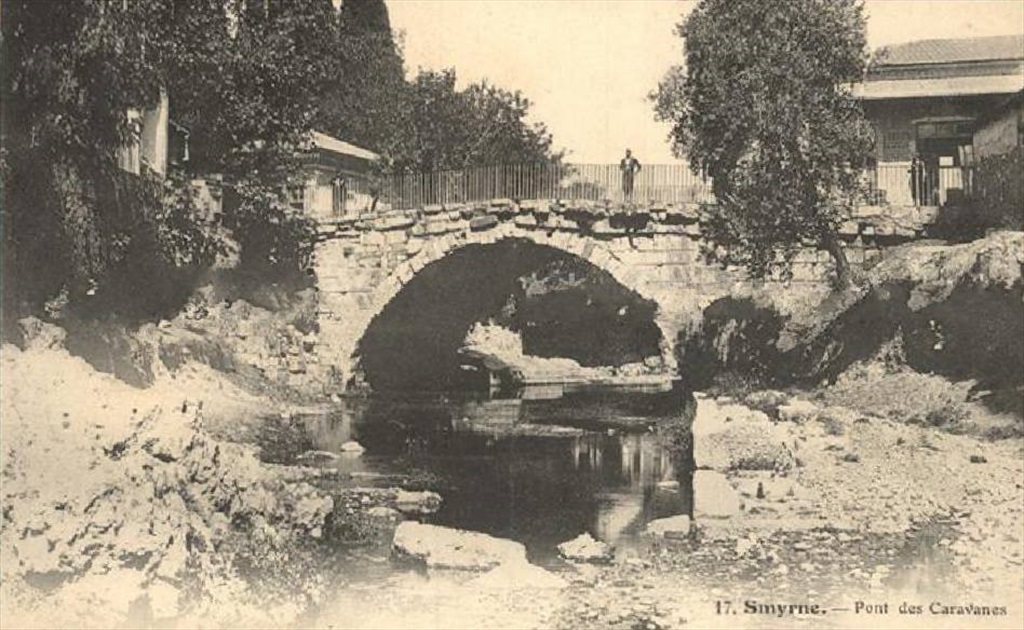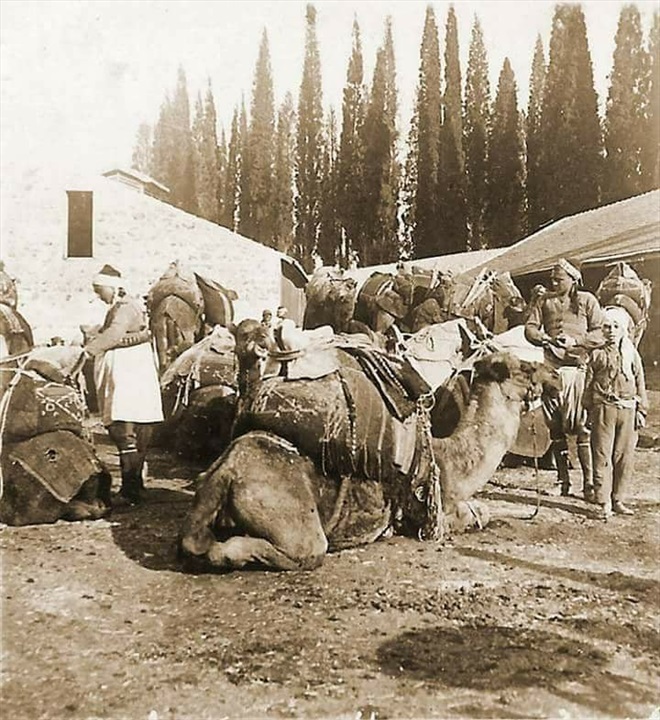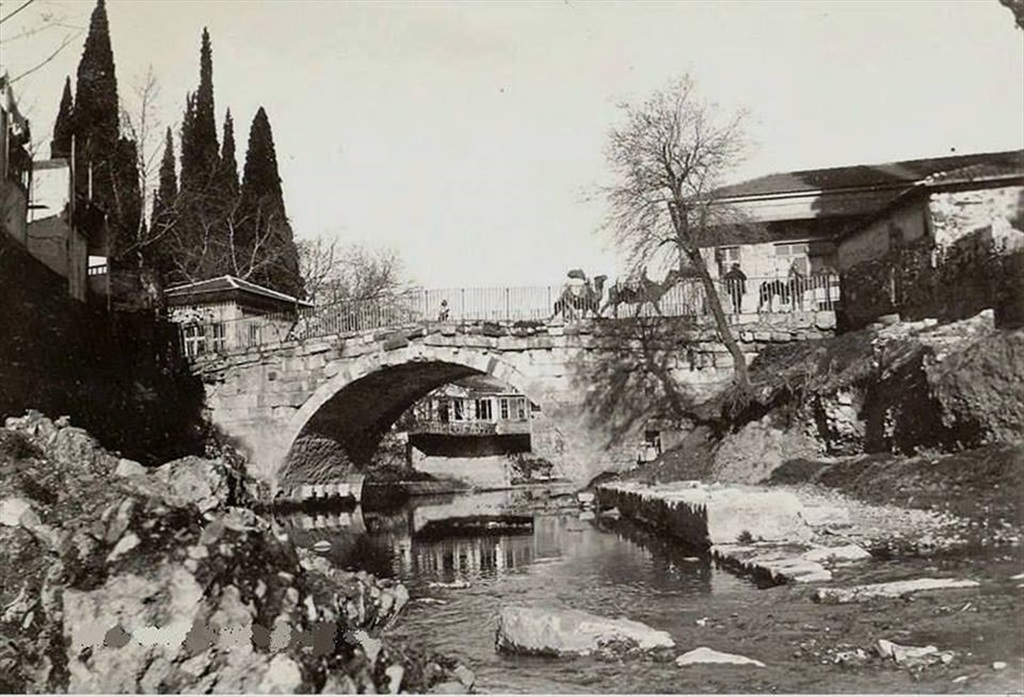Caravan Bridge
Caravan Bridge's history goes more than two thousand years back. It was only very recently that the bridge and the section around it has changed so drastically that it's not recognizable anymore.
Let's lend an ear to notes of French poet Lamartine about this place: 'View of the city and the bay from above the hills and cypress trees is simply amazing. When we go down, we find a great corner by the water, near one of the gates of the city. This place is Caravan Bridge. The river is calm and crystal clear, running smoothly under a green blanket of willow and cypress trees. We sit by it. Turks serve us hookah and coffee...'
Caravan Bridge was one of the prime locations visited by every single traveller who came to Izmir. It was also the most depicted figure in paintings and engravings. This place had the lead role in numerous songs composed, poems written, and postcards issued. From the early 1800s, the space around the bridge became a recreational area. Coffee houses here would be filled up by Muslims on Fridays, Jews on Saturdays, and Christians on Sundays. After the construction of Kordon, this habit slowly faded away.
Meles River running under the bridge marked the eastern border of the city; when you cross this line, hustle and bustle of the city would be in your face. Before arriving at Caravan Bridge, caravans would stroll through the road going between cemeteries, surrounded by cypress trees. As seen in many engravings, camel caravans entered the city over this bridge when delivering silk and other eastern goods from Iran and beyond to Izmir and further west. Upon reaching the bridge, camels would sit and goods would be unloaded for a break.
As railways reached inland Anatolia, number of camel caravans passing through the region dropped from three or four thousand camels a day, to insignificant numbers. Caravans arriving at the city kept decreasing in numbers in early 20th century, and in the 1950s, camels were banned from entering the city and caravans disappeared completely.
Surface of the bridge made of cut stones, estimated to be built in Roman Period in 2nd century B.C.E., is now hidden under the modern bridge. Damaged portions of the stone surface of the bridge had been repaired and maintained multiple times over long years. 6 metres wide historical bridge was extended with a ferroconcrete bridge built next to it to reach 17 metres width.













Comments
No comment left, would you like to comment?